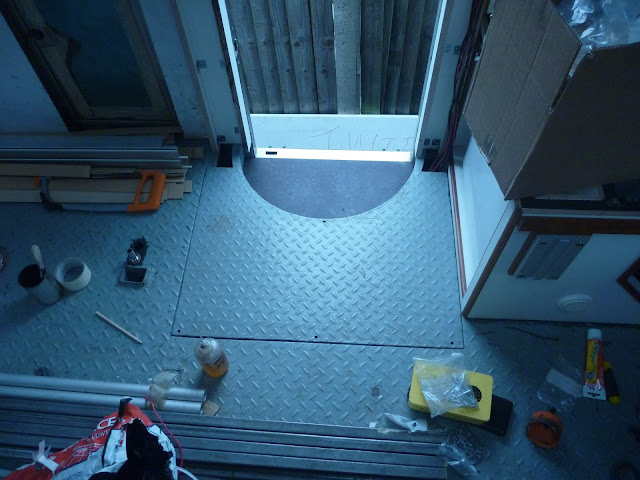There is a recess in Jim's floor in front of the side door; this was originally installed to house part of the mechanism for the revolving personnel door. There was a heavy steel drum, fitted on a large turntable, which in turn was installed on a sensitive electronic weight sensor. The operator would be weighed on exiting the vehicle and the system would prevent anyone of different weight from re-entering.
All of this equipment was removed, leaving a square recess about 150mm deep. I got a local fabricator to bend a piece of steel to form a semi-circular entry step, leaving a large are behind it empty. I started to prepare the space for installation of the heater by welding four mounting studs.
To help dampen the noise of the heater both inside and outside the truck, I glued a sheet of lead/foam sandwich to the base of the compartment and also to the underside of the lid which will cover the space. I used evostik contact adhesive, although I have reservations about whether it'll be able to hold the heavy sheet onto the underside of the lid for any length of time; if necessary I can weld some studs to the metalwork and use large washers to clamp the sheet in place.

With the space prepared I installed the multitude of cables, hoses, ducts and pipes which link the unit to the diesel, air, coolant and electrical power that it needs. Installing a Webasto Thermo Top is not a hugely complex affair provided you have all of the correct components, but it is time consuming and I spent close to two days on this stage. The first task was to connect up the diesel supply.















.jpg)
